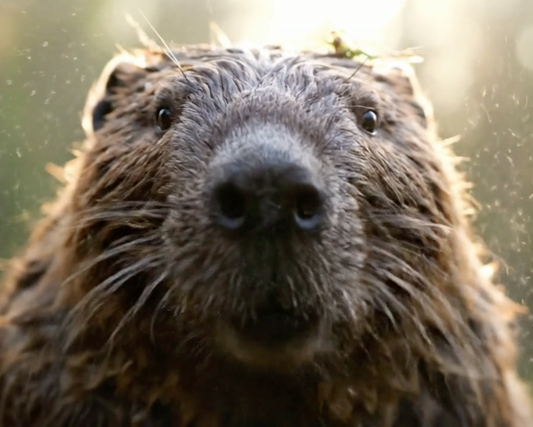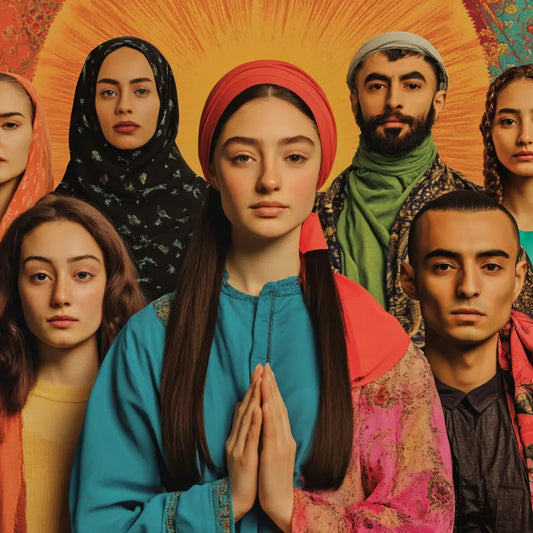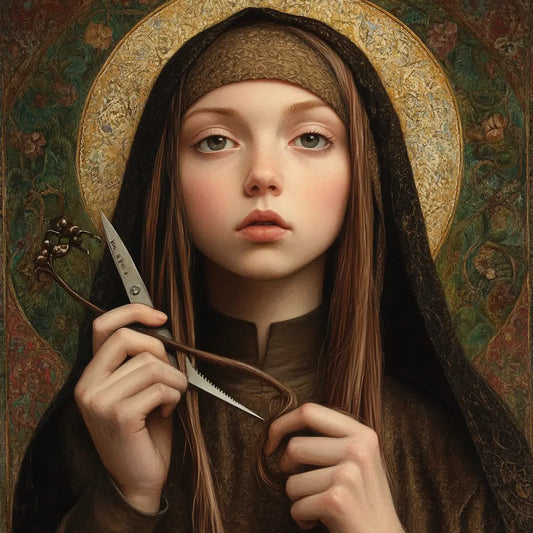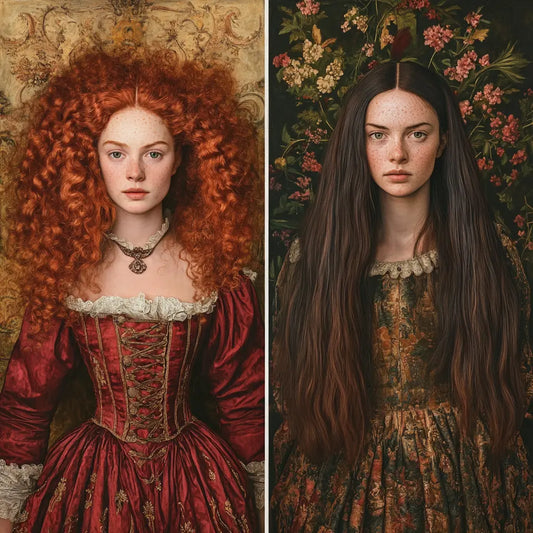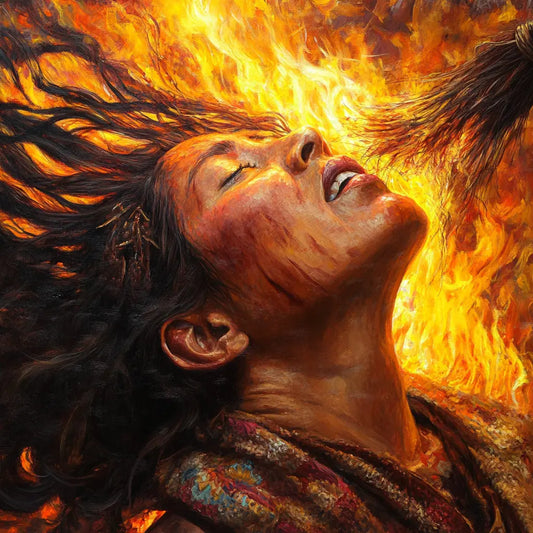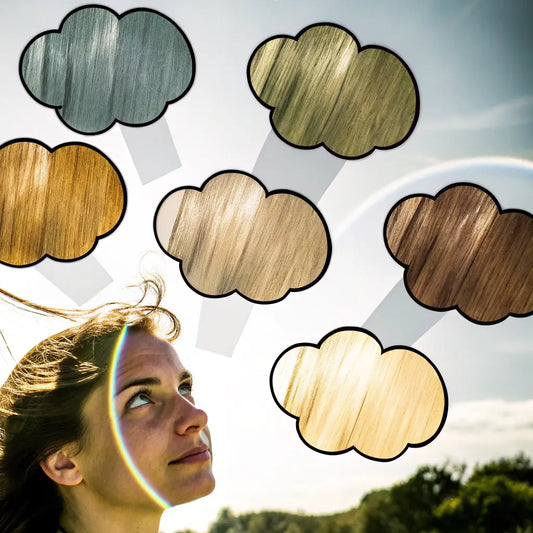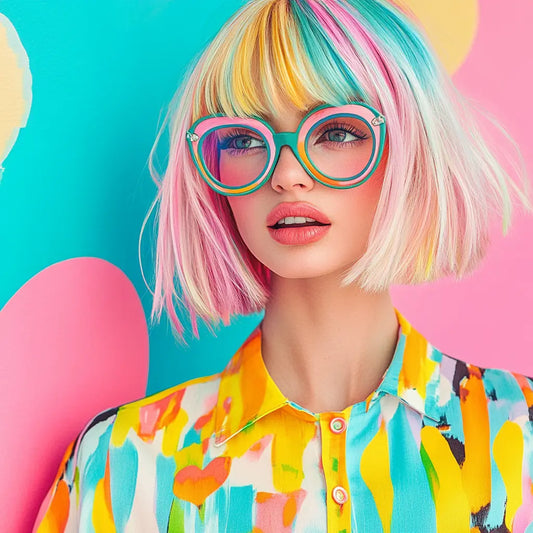Hair has always been an important part of identity, especially when it comes to gender. Over the centuries and across cultures, hair has become a symbol of gender roles, power, and even immortality. As social attitudes toward gender change, hair continues to be an important form of self-expression, challenging traditional norms and providing new ways to understand identity. From historical cultural practices to myths linking hair to eternal life, this article explores how hair shapes gender, strength, and life itself. Whether you’re looking for inspiration or are curious about the symbolism of hair, this article offers a wealth of interesting insights, data, and cultural examples for women ages 18-54.

How hair defines gender in different cultures
Hair has long been one of the most prominent indicators of gender identity. However, its role in shaping gender varies across cultures. Let's take a look at how hair has been used as a gender marker in societies and how these views have changed over time.
Introduction: Hair and Gender Identity
Hair is one of the most direct and visible expressions of gender identity. Historically, it has played a key role in signaling a person’s place in society’s gender binary. While long hair has traditionally symbolized femininity and short hair has symbolized masculinity, these norms are changing today. More and more people are now using their hair as a flexible and fluid way of expressing themselves. To understand how hair fits into modern identity, we need to look at its deep cultural roots.

Hair as a gender marker in different cultures
Throughout history, hair has been closely linked to gender identity, often with strict expectations. For example, in ancient Greece, men were required to wear short hair, which symbolized masculinity, discipline, and military prowess. Conversely, women's long hair was seen as a symbol of their beauty, fertility, and domesticity.
- Fun fact: In ancient Greece, young boys often grew long hair until they reached adulthood. During a ritual, their hair was cut and offered to the gods, symbolizing their transition into adulthood.

In Victorian England, women's long, flowing hair was considered the pinnacle of femininity and moral purity. A woman's hair was considered "her crown," often hidden in public but displayed at home as a symbol of purity and devotion.
- Little-known fact: By the 1870s, over 85% of Victorian women wore their hair long, and those who cut it short often faced social ostracism.

Among the Lakota Sioux Indians, hair was often a symbol of spiritual connection. Long hair was considered a sign of strength and vitality for both men and women. Cutting hair was an important ritual act, usually performed during mourning or as a sign of life changes, rather than as an expression of gender identity.

Changing gender roles in hair fashion
By the 20th century, gender roles related to hair had begun to change. In the 1920s , the flapper movement in Western societies broke many traditional gender norms. Women cut their hair short, symbolizing their independence from restrictive societal roles and challenging the old view that long hair equated with femininity.


- Unexpected fact: In the 1920s, when the bob haircut became popular, 40% of New York City barbershops offered haircuts to women for the first time. Previously, women could only go to beauty salons.

The counterculture movements of the 1960s and 1970s further blurred the lines between gender norms. Both men and women began to grow long hair, rejecting mainstream societal expectations. Long male hair, once considered unfeminine, became a symbol of anti-government and personal freedom.

- Cultural example: In India, Naga Sadhus , a group of ascetic Hindu monks, renounce worldly ties by letting their hair grow uncut, symbolizing their rejection of societal norms, including sexual standards of appearance.
Modern Gender Fluidity and Hair Trends
Today, hair is increasingly seen as a flexible expression of identity. Gender-neutral hairstyles such as the undercut, pixie cut, and buzz cut are gaining popularity. For people who identify with a non-binary or gender fluid identity, hair is becoming a powerful way to express themselves outside of traditional gender norms.

- Interesting number: A 2022 study found that 30% of Gen Zers believe that hair plays an important role in their gender identity, and many prefer styles that are not clearly feminine or masculine.
This shift reflects broader changes in how society views gender and self-expression, with hair now being used as a means of breaking down stereotypes and embracing personal identity.
Hair as a symbol of power and femininity
For centuries, hair has been a symbol of power and femininity, especially in societies that associated a woman's strength with her appearance. From biblical stories to modern feminist movements, women have used their hair to express their power and independence.
Hair as a symbol of female power
In many cultures, long hair has been associated with femininity and strength. The Bible tells the story of Samson , who drew his strength from his uncut hair, which symbolized his divine connection. Although this story is about a man, the idea that hair is a source of power has long been applied to women as well.

In ancient China, a woman's long hair symbolized her vitality and connection to her family, and cutting it was considered an act of disobedience.
- Fun fact: In Tang Dynasty China, cutting one's hair could even have legal consequences. Long hair reflected a woman's duty to her parents and ancestors, and cutting it was considered a disgrace to the family's honor.

Even in modern times, long hair still holds cultural significance. Hair length can be considered a sign of beauty and health, but it also reflects strength and endurance. Women often associate the growth, regeneration, and resilience of their hair with their ability to overcome life's challenges.
Hair in feminist movements and empowerment
Hair also played an important role in feminist movements. In the 1920s, women cut their hair short to break free from the demands of Victorian femininity, signaling their liberation. In the 1960s, the Black Power movement promoted natural hair styles, such as afros, which became a political statement against Eurocentric beauty standards.
- A startling statistic: By 1975, nearly 25% of black women in New York and Chicago had embraced natural hairstyles, including Afros, as a symbol of racial pride and empowerment.

In recent times, the natural hair movement has gained momentum, especially among black women who are embracing their natural hair texture and rejecting harmful beauty standards that demand straight or chemically treated hair. Cutting chemically straightened hair, known as the “Big Chop,” has become a powerful act of self-reclaim and empowerment.
- A powerful example: In 2016, South African students protested against school policies banning natural Afro hairstyles, starting a global debate about hair discrimination and the politics of natural black hair.

Personal Stories: How Hair Reflects Power and Identity
Hair can also have personal significance, shaping identity and power. Emma Gonzalez , a prominent gun control activist, shaved her head to challenge societal expectations of femininity and bring attention to her message. In doing so, she reclaimed her appearance and amplified her voice.

Another powerful example is Oprah Winfrey , who has been outspoken about her struggle for natural hair acceptance. Today, she celebrates her Afro texture and becomes a role model for millions of women who are proud of their natural hair.
Immortality myths related to hair
Hair has often been considered a symbol of strength, longevity, and even immortality in various cultures and myths. From ancient legends to modern folklore, hair has a mystical significance as a vessel of life.
Immortality myths related to hair
One of the most famous stories linking hair to immortality is the biblical story of Samson . His strength was directly related to his uncut hair, and when it was cut, his power disappeared. This connection between hair and strength is also found in other cultures.

- Ancient Greece: Greek gods were often depicted with long, flowing hair, symbolizing their eternal youth and divine power. Achilles , the hero of the Trojan War, was described as having long, flowing hair, symbolizing his immortality in battle.
- A surprising number: In 2020, archaeologists discovered 2,000-year-old hair extensions in Egyptian tombs, fueling speculation that hair was considered a vessel for the afterlife in ancient Egypt.
Hair as a symbol of life and death
Many cultures believed that hair retained vitality even after death. In Victorian England, it was popular to create jewelry or mementos from the hair of the deceased to keep their memory alive. Hair jewelry, known as mourning jewelry, became a popular practice in the 19th century because people believed that hair, which did not decay, could provide a physical connection to those who had passed on.

- Fun fact: Between 1850 and 1900, it is estimated that over 200,000 pieces of jewelry made from human hair were created in Europe and America.
In Japanese Shinto traditions, hair was believed to contain a person's life force, and cutting it was considered a way to rid oneself of negative energy or to mark a significant life change. At the time of death, hair was left uncut to ensure that the soul remained whole.

Myth debunking or interesting facts
-
Myth: Cutting hair promotes hair growth.
Fact: Cutting your hair does not affect its growth rate, which depends on genetics and overall health. - Fun fact: In ancient Egypt, pharaohs believed that their hair would continue to grow after death, symbolizing their transition to the afterlife.
-
Myth: Hair continues to grow after death.
Fact: Hair does not grow after death. The skin shrinks, making the hair appear longer. - Fun fact: In the Ming Dynasty, cutting one's hair was considered an act of rebellion. Hair was considered an extension of the family's honor.
-
Myth: Shaving makes hair grow back thicker.
Fact: Shaving does not make hair grow back. Newly grown hair may feel coarser due to blunt ends, but the thickness remains the same.

Practical tips or solutions
- Embrace your natural hair texture: Celebrate the natural beauty of your hair, whether it's curly, straight, or a combination. Proper care for your hair type can improve its health and appearance.
- Choose a hairstyle that reflects your identity: Your hair is a part of your personality. Whether you choose a bold or classic hairstyle, choose a style that gives you confidence.
- Protect your hair from damage: Using heat protectants, avoiding excessive heat styling, and nourishing your hair with the right products can help maintain its strength and shine.
- Don't be afraid to experiment: Don't be afraid to try new hairstyles or haircuts. Hair grows back, and experimenting with new looks can be a great way to explore different aspects of your personality.
- Maintain a healthy scalp: A healthy scalp is the foundation for healthy hair. Regular scalp care and hydration can promote growth and prevent problems like dandruff.

Frequently asked questions
-
How often should I cut my hair to keep it growing healthy?
Getting your hair trimmed every 8-12 weeks can help prevent split ends and maintain hair health, although it doesn't affect growth rate. -
Can stress cause hair loss?
Yes, chronic stress can cause temporary hair loss due to a condition called telogen effluvium. -
What hairstyle is best for thick hair?
Layered haircuts are great for thick hair, making it look lighter and less bulky. Talk to your stylist about the best option for your face shape and lifestyle. -
How can I embrace my natural curls?
Using curl-friendly products, avoiding heat damage, and moisturizing your hair regularly can help improve curl definition. -
Is it true that braids can protect hair from damage?
Yes, protective hairstyles like braids can reduce hair breakage and keep the ends healthy, but it's important not to pull the braids too tight to avoid damaging your scalp.

Conclusion
Hair has long been a defining feature of gender, identity, and even myths of immortality. From rigid gender norms to modern hair freedom, our relationship with hair continues to evolve. Whether used to express personal power, challenge societal expectations, or reflect ancient traditions, hair is a powerful tool that shapes who we are. For women, understanding the role of hair in history, culture, and identity can provide a deeper understanding of its significance in today’s lives. Celebrate the unique history of your hair and let it reflect your strength, femininity, or fluidity.






